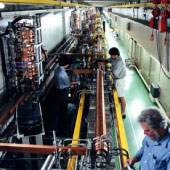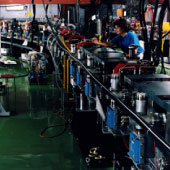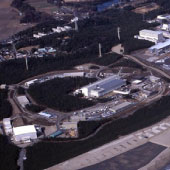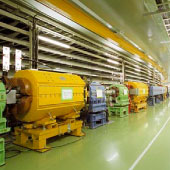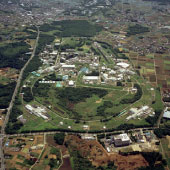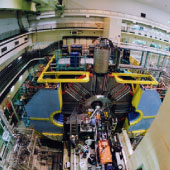| Name: |
Accelerator Test Facility (ATF) |
| Site: |
High Energy Accelerator Research Organization (KEK)(Tsukuba) |
| Startup year: |
1997 |
| Type: |
Electron ring (Damping ring) |
| Energy: |
1.28 GeV |
ATF is a test accelerator facility designed to generate highly stable super-low-emittance beams needed for the future linear collider. It was successful in improving beam’s emittance by two orders of magnitude. Making use of this low emittance level, ATF2, an extension of the ATF, plans to squeeze the beams further to nanometer level (35 nanometers) required for the linear collider, and to study techniques to control the beam position in nanometer scale. 26 institutions from 10 countries and an international laboratory around
the world collaborate to plan, design and construct the ATF2.
| Name: |
Japan Proton Accelerator Research Complex (J-PARC) |
| Site: |
Japan Atomic Energy Agency (JAEA) Tokai Research and Development Center / KEK Tokai Campus (Tokai) |
| Startup year: |
2008 |
| Type: |
Electron synchrotron |
| Energy: |
50GeV(Max) |
Japan Proton Accelerator Research Complex (J-PARC), a frontline research facility in particle physics, has an accelerator complex that provides very high energy—highest in the world—proton beams, and various experimental facilities that conduct research using the proton beams. The accelerator complex consists of two linacs, a 30GeV synchrotron, and a 50GeV synchrotron. The 30GeV synchrotron provides proton beams to Material and Life Science Facility, which has a neutron source and a muon source, while the 50GeV synchrotron supplies protons to both Nuclear and Particle Physics Facility (Hadron Experimental Hall), and Neutorino Experimental Facility. Transmulation Experimental Facility plans to use low-power proton beams extracted from a linac.
| Name: |
KEKB |
| Site: |
High Energy Accelerator Research Organization (KEK) (Tsukuba) |
| Startup year: |
1998 |
| Type: |
Electron-positron collider |
| Energy: |
Electron 3.5GeV, Positron 8.0GeV |
KEKB produces tens of millions of pairs of B mesons and anti-B mesons every year by colliding electrons and positrons. The main purpose of KEKB is to probe the CP violation, a violation of symmetry between particles and anti-particles, by observing the electron-positron collisions. B mesons and anti-B mesons decay immediately after created in the collisions, and the decay is observed by a detector called Belle surrounding the interaction point. KEKB, as well as another similar experiment PEPII, confirmed the CP violation in K mesons and B mesons predicted by the Kobayashi-Maskawa’s six-quark model. Makoto Kobayashi and Toshihide Maskawa shared 2008 Nobel Prize for Physics with Yoichiro Nambu. The upgrade of KEKB will allow exploration of new physics in the future.
| Name: |
Spring-8 |
| Site: |
|
| Startup year: |
|
| Type: |
|
| Energy: |
|
